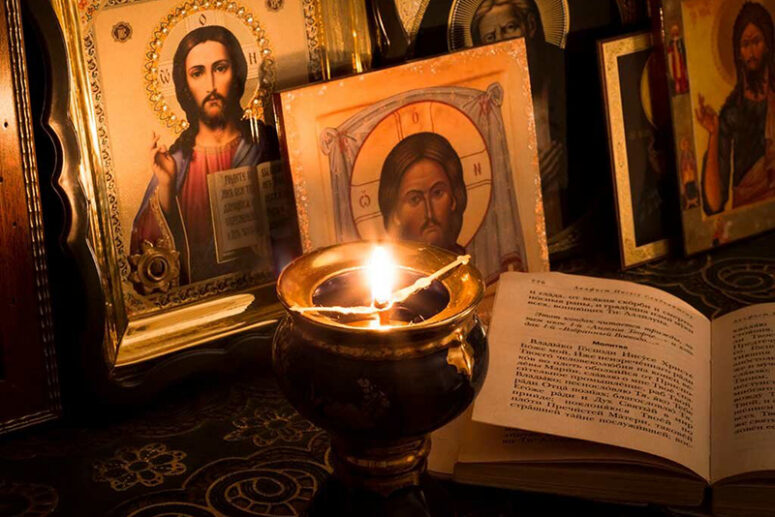
A Christian’s morning should always begin with prayer and thanksgiving to God for the past night. Opening the Orthodox “best-seller”, known as a prayer book, the first thing we read is morning prayers. We are so accustomed to them that many are surprised to learn that the modern rite of morning prayers is quite a late phenomenon in the life of the church, which does not occur earlier than the 18th century and which is not even practised by every local Church. When and why did the rite of morning prayers appear? What are its “strong and weak” points?
The Origin
There is a hypothesis associating the appearance of the morning and evening prayers’ rites with the name of the famous Belarusian printing pioneer, Dr. Francysk Skaryna (Kozlov, Turilov). Skaryna, about 1522, published his Little Travel Book, encompassing the Psalter, the Daily Cycle of divine services, 8 canons, 8 akathist hymns, as well as the order of Divine Liturgy. It was one of the first printed books of hours, allowing the laity to privately celebrate services of the daily cycle, in line with the Byzantine tradition and proving that such a tradition did exist. It was common for believers in ancient times to try to memorize the sequence of services and liturgical texts (e. g. memorizing the book of Psalms was spread among the monastics). In the absence of a priest, the faithful gathered for services in chapels, or in homes of wealthier and more literate parishioners who owned liturgical books. The connection between the Little Travel Book and the modern prayer books that arose in the 18th-19th centuries can be traced through the increasingly popular akathist-books, for which Skaryna’s book essentially served as a prototype. Akathist-books of the 17th century contained elements of today’s morning and evening prayers, later included in Russian prayer books. What were these prayers and where did they come from?
Remnants of the Midnight Office
Analyzing the contents of morning prayers, one can notice some similarity with the midnight office, giving ground to the assumption commonly met in modern liturgics (priest Mikhail Zheltov) that these prayers were taken from there. As it appears, the following prayers were borrowed from the daily midnight office: the usual beginning, the troparion “Having arisen from sleep,” the prayer “Having risen from sleep, I thank Thee, the Holy Trinity”, the 50th psalm, the Symbol of Faith, as well as the 5th and 6th prayers of St Basil the Great. The rest of the prayers began to appear in Slavic manuscripts from the 16th century.
There were two factors that contributed to the emergence of a separate rite of morning prayers. One of them is the so-called “paraliturgical” creativity, i. e. the process of creating various non-canonical akathist-books (Frs. Mikhail Zheltov and Sergiy Pravdolyubov), flourishing since the 18th century. Such editions usually contained varieties of prayers, including morning ones. The other factor is the absence of the midnight office and Compline in the daily cycle of parish churches, with the exception of monastic communities. In this context, the formation of their abbreviated lay versions in the form of morning and evening prayers, respectively, could be conditioned by the common parish practice.
“Pros and Cons” of Morning Prayers
The undoubted value of the rite of morning prayers lies in its commonness among the faithful of the Russian Orthodox Church. Reading of morning and evening prayers, from a prayer book, has become, in fact, the daily circle of lay worship, setting the tone and serving as a center, around which a believer’s home prayer revolves. The morning prayer rule is simple, short and convenient for memorization, which makes it possible to recite these prayers from memory, while in the street or in transport. The rite of morning prayers includes the beautiful prayers of St Macarius of Egypt and St Basil the Great, as well as prayers to the Mother of God and the Guardian Angel, the 50th Psalm of Penitence and the profession of the Orthodox faith.
However, there are still obvious disadvantages. First of all, limiting our prayer rule by the daily reading of the morning prayers inevitably creates the effect of monotony and a feeling of routinism, which can negatively affect our attention to prayer and cause the desire to read them as quickly as possible. Besides, morning prayers are very individualistic in their content; almost all of them are read in the first person (except for the 5th and 6th). Being aimed solely at the spiritual needs of the person praying, they do not contain petitions for the church and the world. In contrast to the lamplighting prayers of Matins, the themes of repentance and supplication have the edge in the prayer-book prayers over the relatively unpronounced laudatory, thanksgiving and church-communal aspects of prayer. The other undeniable disadvantage is the almost full absence of biblical material (with the exception of the 50th psalm) in morning prayers. There is also no provision for following the daily readings of the Holy Scriptures (in practice, the laity try to read the ordinary beginnings of the day, or two chapters from the Apostle and the chapter of the Gospel).
To this end, the selection of the morning prayers, contained in modern prayer books, dates back to no earlier than the 18th century and appears to be a shortened version of the midnight office, adapted for the laity. Prior to that (in some local Churches and in the Old Believer tradition to this day), the laity performed their prayer rule, using the divine services of the daily circle. With all due respect to the importance of reading morning prayers it is worth noting the importance and spiritual benefits of direct participation in temple worship, which cannot be replaced by private prayer. Deliberate and informed participation in church services, like nothing else, is capable of introducing believers into the riches of the liturgical tradition of the church.




